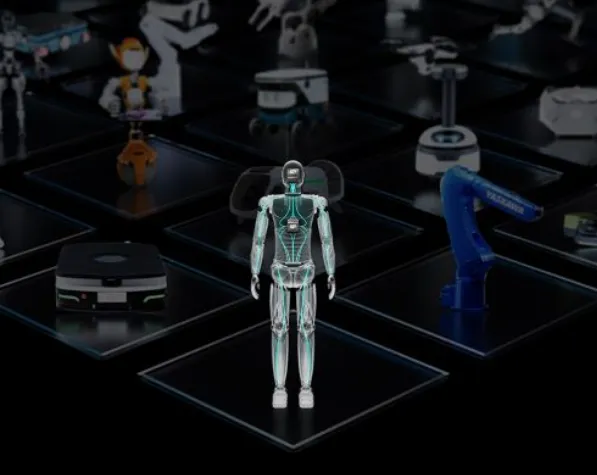Nvidia has unveiled Project GR00T, an ambitious initiative designed to bring artificial intelligence closer to real-world robotics. Alongside this announcement, the company introduced Jetson Thor, a powerful computing platform built to support humanoid robots, as well as notable enhancements to its Isaac robotics ecosystem.
Jensen Huang, Nvidia’s founder and CEO, highlighted the importance of this development, describing the creation of foundation models for humanoid robots as one of the most exciting challenges in AI. According to Huang, the convergence of advanced computing and robotics is paving the way for significant breakthroughs in artificial general robotics.
What Project GR00T Brings to Robotics
The name GR00T, short for Generalist Robot 00 Technology, reflects its mission: enabling humanoid robots to learn and adapt much like humans. The platform equips robots with the ability to interpret natural language, mimic human movements through observation, and acquire essential motor skills such as coordination and dexterity. These abilities are intended to prepare robots for tasks that require flexibility, adaptability, and safe interaction in human-centered environments.
To complement GR00T, Nvidia launched Jetson Thor, a system-on-a-chip tailored for robotics applications. Built with a modular architecture, Jetson Thor balances performance with energy efficiency while offering the computing power necessary for advanced robotic functions and seamless collaboration between humans and machines.
Collaborations Driving Innovation
Nvidia is not working alone. The company is partnering with leading robotics firms including Agility Robotics, Boston Dynamics, Apptronik, Figure AI, Fourier Intelligence, Sanctuary AI, Unitree Robotics, and XPENG Robotics. Together, they aim to build a shared AI platform that could redefine the role of humanoid robots across industries.
Jonathan Hurst, co-founder and chief robot officer at Agility Robotics, emphasized this turning point in robotics. He explained that human-focused robots such as Digit could transform how labor is managed, with AI advancements accelerating their readiness to assist in everyday tasks. By collaborating with Nvidia, these companies gain access to advanced computing infrastructure, simulation environments, and AI tools to make this vision more achievable.
Expanding the Isaac Platform
In parallel with Project GR00T, Nvidia has expanded its Isaac robotics platform, offering a suite of tools to help developers design and train robotic models. Updates include Isaac Lab for reinforcement learning, OSMO for orchestration, and specialized modules like Isaac Manipulator and Isaac Perceptor. These tools, combined with pre-trained models, libraries, and reference hardware, are intended to accelerate the development of robots with advanced perception and manipulation abilities.
Looking Ahead
By integrating Project GR00T with Jetson Thor and the Isaac platform, Nvidia is positioning itself at the forefront of humanoid robotics. Its approach combines AI, simulation, and hardware into a unified ecosystem that encourages collaboration and speeds up innovation. If successful, these efforts could usher in a future where robots not only support industrial tasks but also become a seamless part of daily life.







